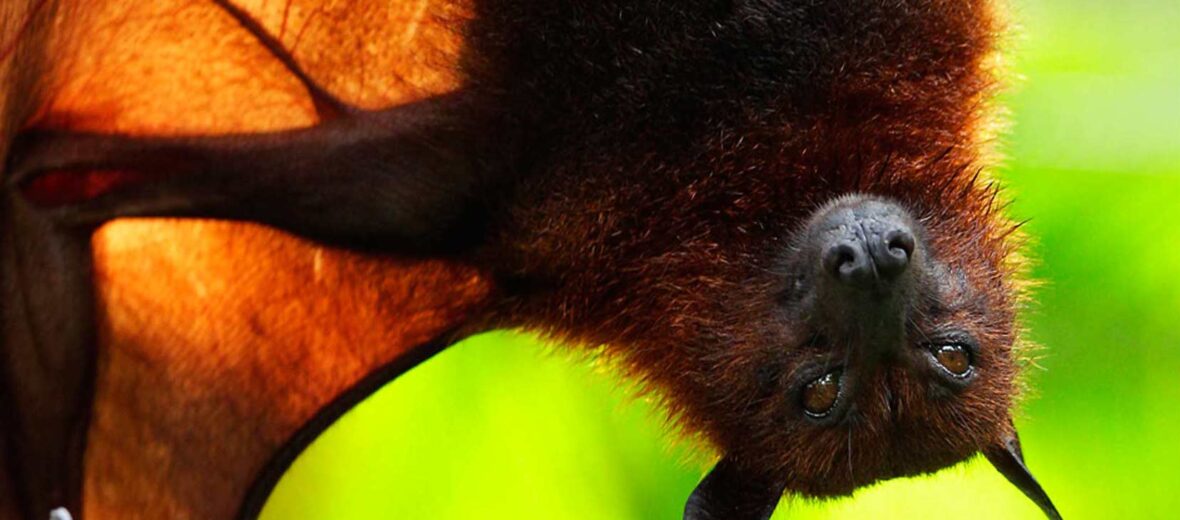
The Malayan flying fox, aka Malaysian flying fox, greater flying fox, large fruit bat, Kalong, and Kalang, is a large species of bat found in the Malaysian Peninsula, Burma, Vietnam, the Philippines, Borneo, Sumatra, Java, the Lesser Sunda Islands, and Anak Krakatau. They prefer mangrove forests, primary forests, coconut groves, mixed fruit orchards, and a variety of other habitats as well. Due to habitat destruction, trapping, and hunting for bush meat these bats are listed as Near Threatened by the IUCN.
First the Stats…
Scientific name: Pteropus vampyrus
Weight: Up to 2.6 lbs.
Length: Up to 12.6 inches
Wingspan: Up to 5.5 feet
Lifespan: Up to 30 years
Now on to the Facts!
1.) Flying foxes are important seed dispersers as well as pollinators.
2.) Flying foxes are social creatures that have been recorded roosting in groups containing up to 20,000 individuals!
3.) Like most bats, the Malayan flying fox is nocturnal (active at night).
4.) They have been known to fly over 30 miles in a single night, for food.
5.) These bats are territorial and display aggression towards each other by spreading their wings, growling, biting, and sparring.
But wait, there’s more on the Malayan flying fox!
6.) A group of bats can be called a colony, cloud, or flock.
7.) The Malayan flying fox feeds on nectar, flowers, and fruit. Making them frugivorous (eat fruit), nectarivorous (consume nectar), and polynivorous (eat pollen).
Did you know…?
The Malayan flying fox is considered one of the largest species of megabats. With the largest being the golden crowned flying fox.
8.) When they find a suitable tree, they will land upright, then rotate around to their typical upside down position to feed.
9.) Due to their large appetite for fruit, farmers will often try to trap and kill them, as they can cause damage to crops.
10.) Flying foxes are considered polygynous (males mate with a harem of up to 10 females).
But wait, there’s more on the Malayan flying fox!
11.) Females birth a single pup, each breeding season, after up to a 190 day gestation (pregnancy).
12.) Pups are weened at about 3 months of age.
13.) Since these bats don’t catch flying insects, they don’t rely on echolocation for navigation. They have good eyesight though.
14.) Birds of prey and snakes prey on these bats.
15.) These bats don’t roost in caves, as they prefer trees.
Now a Short Malayan Flying Fox Video!
Be sure to share & comment below! Also, check out the Critter Science YouTube channel. Videos added frequently!
Want to suggest a critter for me to write about? Let me know here.



